
Moengo: A Cultural Oasis in Suriname's Jungle
Discover Moengo, Suriname's vibrant cultural oasis amidst the jungle, where art, history, and nature converge in a unique and unforgettable experience.
Moengo is a hidden gem nestled in the lush rainforests of Suriname. Known for its rich cultural heritage and vibrant art scene, this former bauxite mining town has transformed into a lively hub of creativity and community spirit. Surrounded by pristine nature, Moengo offers a unique blend of cultural experiences and natural beauty. Explore the town's artistic side by visiting the Moengo Festival of Visual Arts, an annual event that attracts artists from around the world. The Marowijne Art Park is another must-see, featuring impressive sculptures and installations that tell the story of the region's history and culture. Wander through the town and you'll find colorful murals and street art that add to Moengo's charm. Nature lovers will enjoy the scenic trails and waterways that surround Moengo. Guided tours offer a chance to see the local wildlife and lush landscapes up close. The nearby Cottica River is perfect for a relaxing boat ride, providing stunning views of the tropical rainforest. Whether you're an art enthusiast, nature lover, or just looking for a peaceful retreat, Moengo has something special to offer.
Local tips in Moengo
- Visit during the Moengo Festival of Visual Arts to experience the town's artistic vibrancy at its peak.
- Take a guided tour to learn about the local history and see the best of Moengo's natural surroundings.
- Explore the Marowijne Art Park early in the morning to avoid the midday heat and enjoy a peaceful atmosphere.
- Don't miss the chance to take a boat ride on the Cottica River; it's a great way to relax and see the area's wildlife.
Moengo: A Cultural Oasis in Suriname's Jungle
Moengo is a hidden gem nestled in the lush rainforests of Suriname. Known for its rich cultural heritage and vibrant art scene, this former bauxite mining town has transformed into a lively hub of creativity and community spirit. Surrounded by pristine nature, Moengo offers a unique blend of cultural experiences and natural beauty. Explore the town's artistic side by visiting the Moengo Festival of Visual Arts, an annual event that attracts artists from around the world. The Marowijne Art Park is another must-see, featuring impressive sculptures and installations that tell the story of the region's history and culture. Wander through the town and you'll find colorful murals and street art that add to Moengo's charm. Nature lovers will enjoy the scenic trails and waterways that surround Moengo. Guided tours offer a chance to see the local wildlife and lush landscapes up close. The nearby Cottica River is perfect for a relaxing boat ride, providing stunning views of the tropical rainforest. Whether you're an art enthusiast, nature lover, or just looking for a peaceful retreat, Moengo has something special to offer.
When is the best time to go to Moengo?
Iconic landmarks you can’t miss
Palmtree Garden
Experience the serene beauty of Palmtree Garden in Paramaribo, a lush park filled with palm trees, vibrant flora, and delightful sculptures.
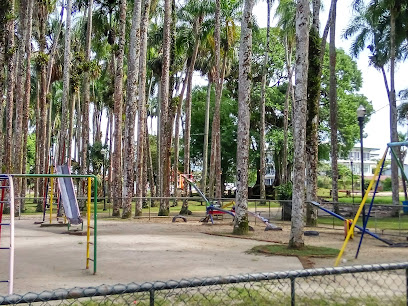
Fort Zeelandia
Explore the historical treasures of Fort Zeelandia, a captivating museum in Paramaribo that unveils Suriname's colonial past and cultural heritage.
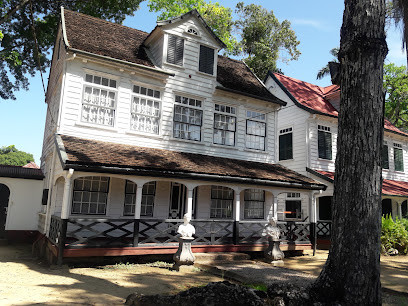
Saint-Peter-and-Paul Basilica of Paramaribo
Explore the stunning Saint-Peter-and-Paul Basilica in Paramaribo, a breathtaking blend of architectural beauty and cultural significance in Suriname.
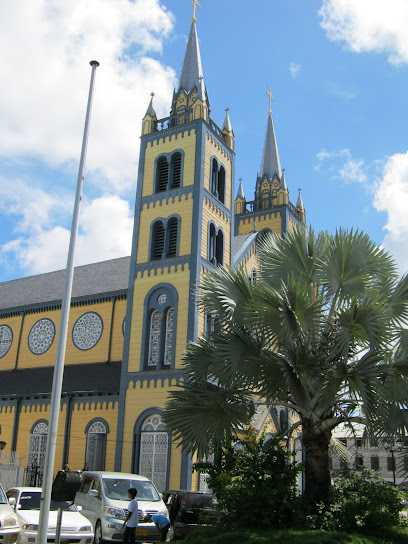
Brownsberg
Explore the breathtaking landscapes and rich biodiversity of Brownsberg Park, a natural paradise in Suriname perfect for adventure and relaxation.
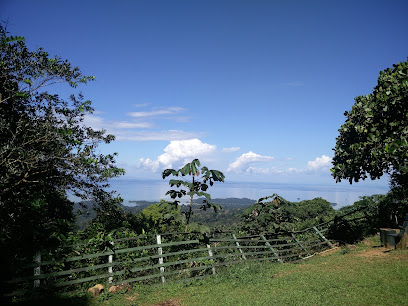
Peperpot Nature Park
Explore Peperpot Nature Park, a serene escape in Suriname filled with vibrant wildlife and lush landscapes perfect for nature lovers and adventurers.
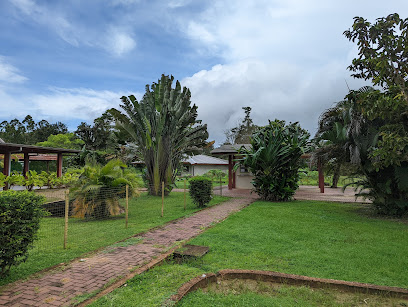
Jules Wijdenbosch Bridge
Experience stunning views and local culture at the Jules Wijdenbosch Bridge in Paramaribo, a must-visit tourist destination in Suriname.
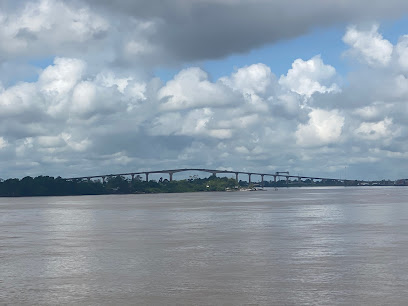
Presidential Palace
Explore the grandeur of Suriname's Presidential Palace, a historical monument at Independence Square that reflects the nation's rich heritage and architectural beauty.
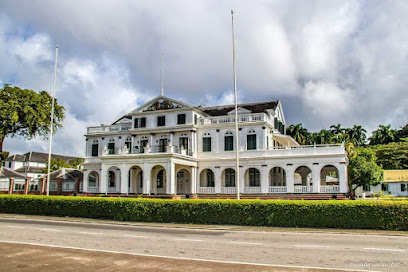
Neveh Shalom Synagogue
Explore the Neveh Shalom Synagogue in Paramaribo, a historical gem showcasing Suriname's rich Jewish heritage and unique architectural beauty.
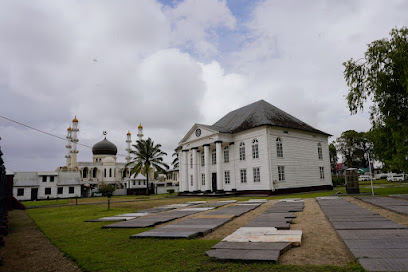
Arya Dewaker Mandir
Explore the serene beauty and spiritual richness of Arya Dewaker Mandir, a must-visit Hindu temple in the heart of Paramaribo, Suriname.
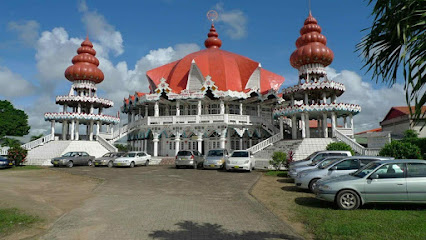
Neotropical Butterfly Park
Discover the enchanting world of butterflies at Neotropical Butterfly Park, a vibrant garden in Lelydorp, Suriname, showcasing diverse species in a serene setting.
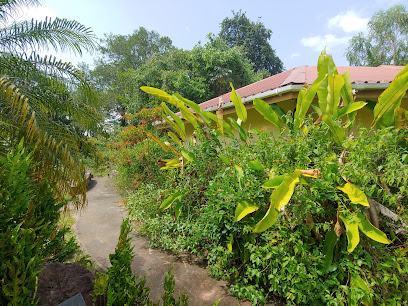
Plantage Bakkie
Immerse yourself in Suriname's vibrant history at Plantage Bakkie, a museum showcasing rich cultural heritage and captivating exhibits.

Braamspunt
Discover the tranquil beauty of Braamspunt Beach in Suriname, a perfect retreat for relaxation amidst nature's wonders.
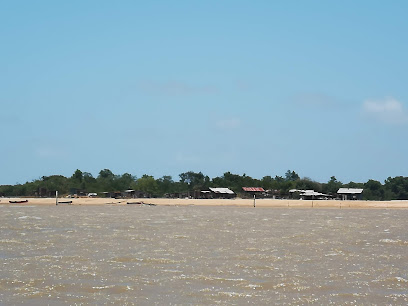
Surinaams Museum
Explore Suriname's diverse heritage at the Surinaams Museum, where history comes alive through captivating exhibits in a historic fort.
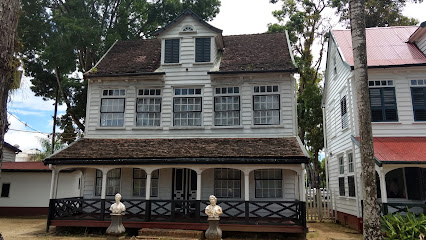
Fort Nieuw Amsterdam
Explore the rich history and stunning architecture of Fort Nieuw Amsterdam, a key landmark in Suriname's colonial heritage.

Historic Innercity of Paramaribo
Explore the Historic Innercity of Paramaribo, a UNESCO World Heritage site, where colonial architecture meets vibrant culture in the heart of Suriname.
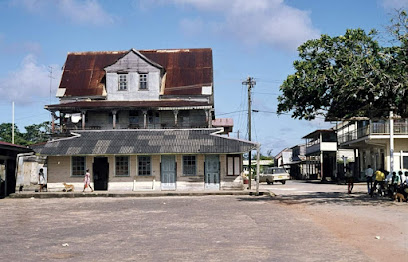
Unmissable attractions to see
Brownsberg
Discover the breathtaking landscapes and rich biodiversity at Brownsberg, a premier tourist attraction in Suriname's lush rainforest.
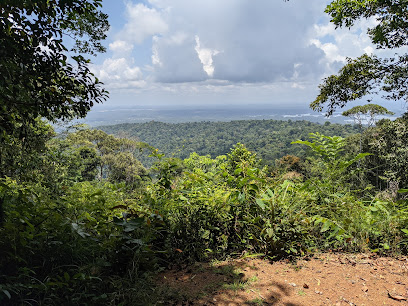
Peperpot Nature Park
Explore the breathtaking biodiversity and historical charm of Peperpot Nature Park, a must-visit nature preserve in Suriname for every nature enthusiast.
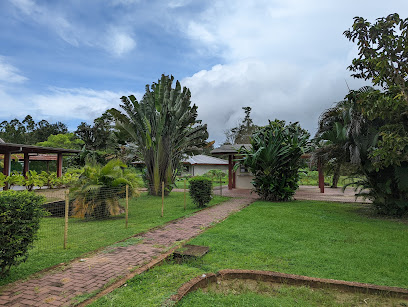
Bigi Pan
Explore the serene beauty and diverse wildlife of Bigi Pan National Park in Suriname, a perfect destination for nature lovers and adventure seekers.
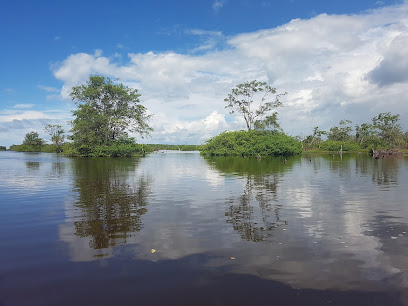
Plantage Bakkie
Explore the captivating history and diverse heritage of Suriname at Plantage Bakkie, a must-visit tourist attraction and museum.
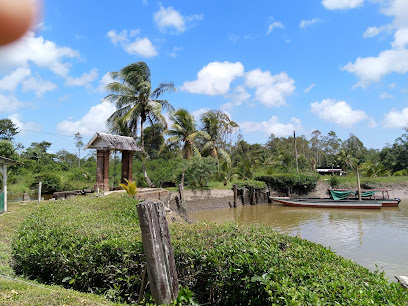
Surinaams Museum
Experience Suriname's rich history and vibrant culture at the Surinaams Museum, located in the historic Fort Zeelandia.
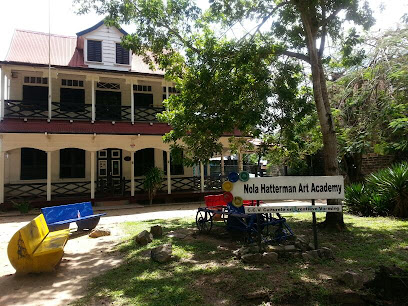
Kumalu Dream Island
Explore Kumalu Dream Island, an enchanting tourist attraction in Suriname offering stunning landscapes, cultural experiences, and unforgettable adventures.
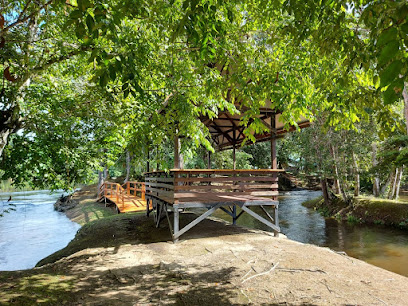
Contemporary Art Museum Moengo (CAMM)
Discover the Contemporary Art Museum Moengo, where Suriname's vibrant art scene comes alive through innovative exhibitions and community engagement.

Essential places to dine
Chi Min
Experience the rich flavors of authentic Chinese cuisine at Chi Min in Paramaribo—where every meal tells a story.
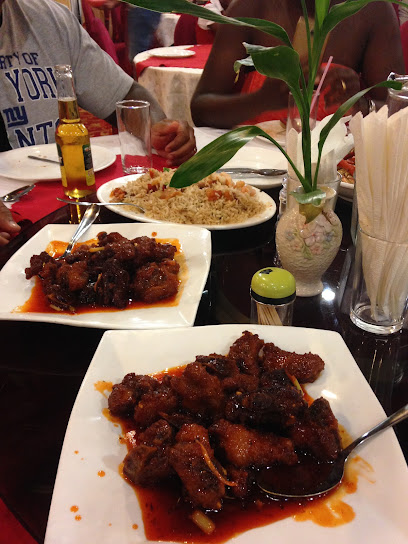
Garden of Eden
Experience authentic Thai cuisine in Paramaribo's vibrant Garden of Eden – where every dish tells a story.
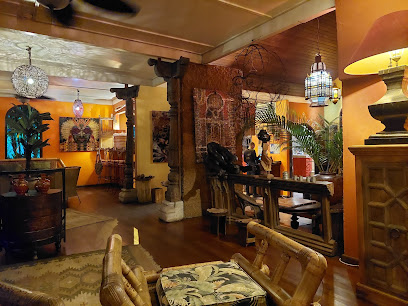
Mirosso
Discover authentic Indonesian flavors at Mirosso in Paramaribo - where every dish tells a story of tradition and taste.
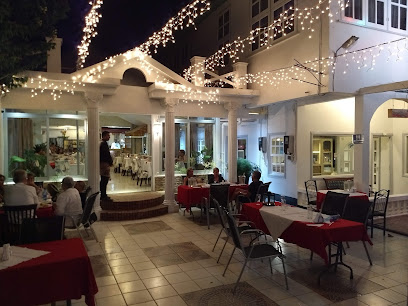
SOUPOSO
Discover the flavors of Suriname at SOUPOSO, where traditional meets contemporary in a delightful dining experience.

De Gadri
Experience authentic Surinamese cuisine at De Gadri in Paramaribo—where every dish celebrates local flavors and rich cultural heritage.
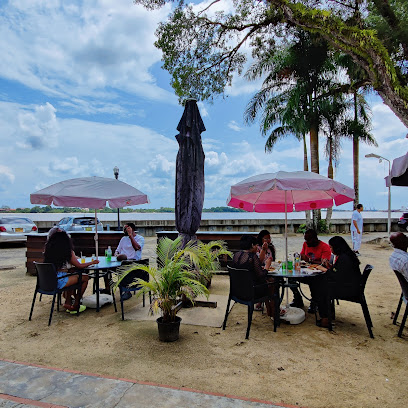
Roline's de Waag
Experience the vibrant culture of Paramaribo at Roline's de Waag - where culinary delights meet live music in a historic setting.
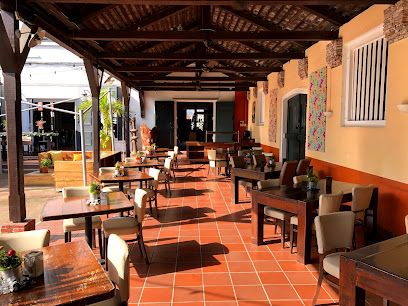
Martin's House of Indian Food
Indulge in authentic Indian cuisine at Martin's House in Paramaribo - where spices meet tradition for an unforgettable dining experience.
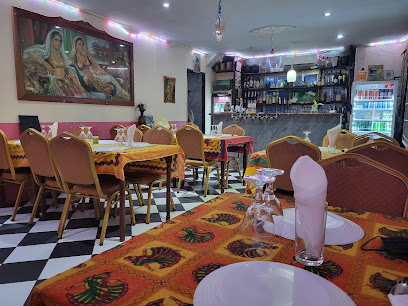
Squeezy Hot Pot Chinese Restaurant
Discover authentic Chinese flavors at Squeezy Hot Pot in Paramaribo - an interactive dining experience filled with delicious hot pot delights.
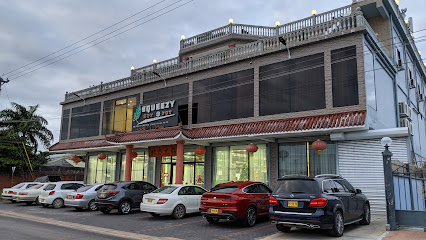
Moments
Experience authentic Surinamese cuisine at Moments - a culinary gem in Paramaribo offering delicious dishes and a warm atmosphere.
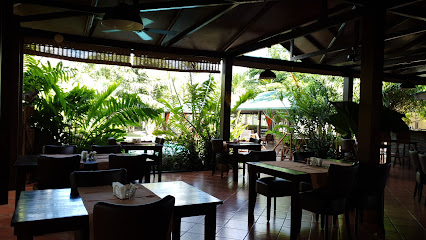
Padre Nostro
Experience authentic Italian cuisine and delightful ice creams at Padre Nostro in Paramaribo - a must-visit destination for food lovers.
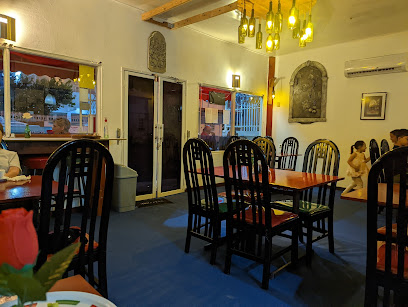
Baka Foto
Experience authentic Surinamese cuisine at Baka Foto, nestled in Fort Zeelandia, Paramaribo—where history meets culinary delight.
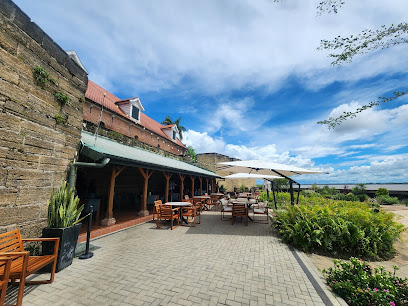
Don Julio
Experience authentic Cuban flavors at Don Julio in Paramaribo - where food meets fun in a vibrant atmosphere.

Tori Oso
Experience exquisite Surinamese flavors at Tori Oso in Paramaribo - a culinary delight blending local traditions with modern cuisine.
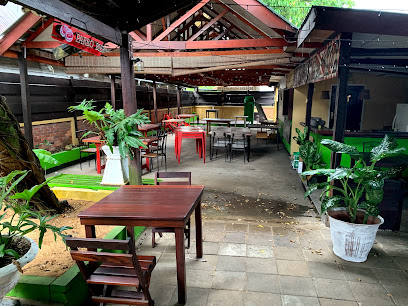
Bamboo Green Garden
Experience authentic Chinese cuisine at Bamboo Green Garden in Paramaribo - where flavor meets warmth in every dish.
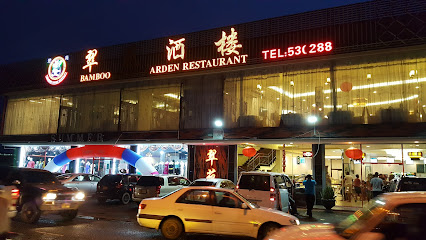
Restaurant Shadien
Savor authentic Surinamese cuisine at Restaurant Shadien in Paramaribo - where tradition meets taste in every bite.
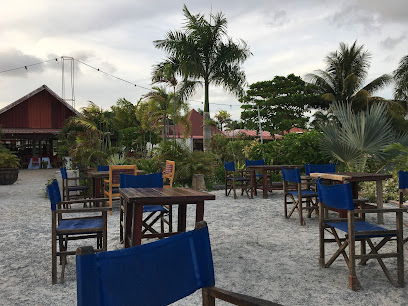
Markets, malls and hidden boutiques
Hermitage Mall
Discover the charm of Hermitage Mall in Paramaribo, Suriname – a shopping haven with diverse stores, delicious dining, and family-friendly entertainment.
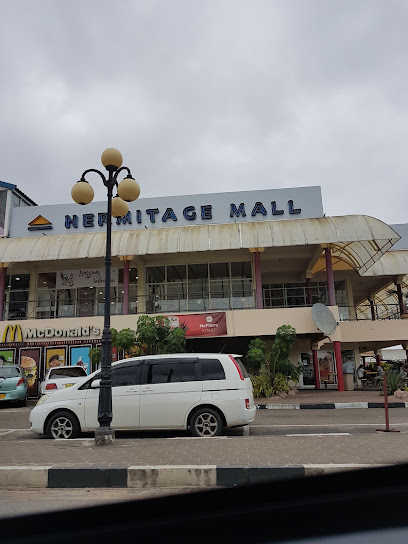
Lucky Store
Explore the vibrant offerings of Lucky Store in Paramaribo, where unique home goods and local charm await every visitor.
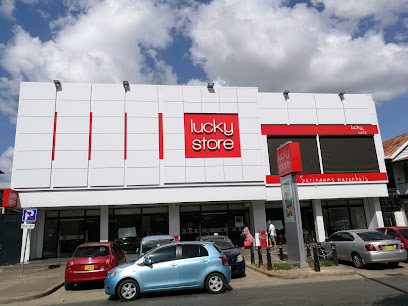
Flamingo Store
Explore the Flamingo Store in Paramaribo for local groceries, delicious snacks, and unique souvenirs that celebrate the culture of Suriname.
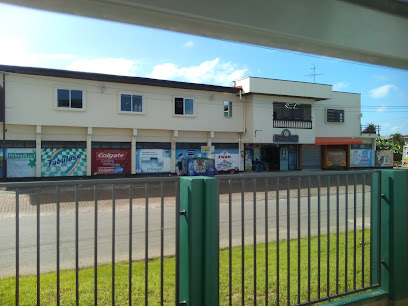
Benny's
Explore Benny's in Paramaribo for unique gifts and authentic Surinamese souvenirs, embodying the vibrant culture and heritage of Suriname.
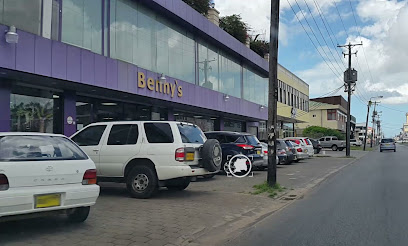
Miniso
Explore Miniso in Paramaribo for stylish home goods that blend quality and affordability, perfect for souvenirs and gifts.
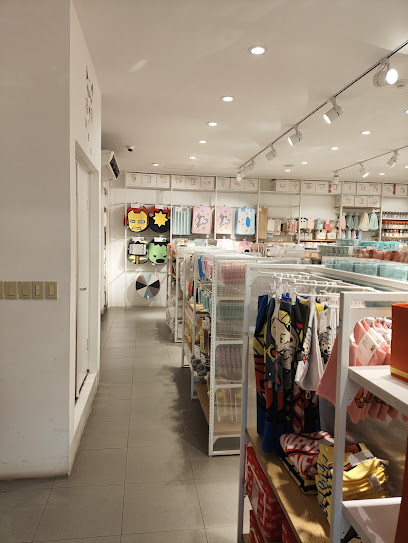
MANGO
Explore MANGO in Paramaribo for stylish women's fashion that perfectly blends contemporary trends with timeless elegance.
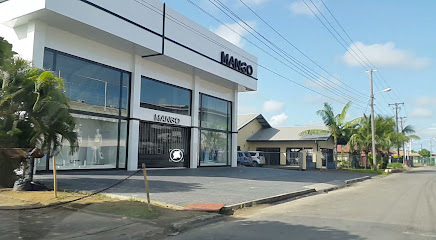
La belle Giftworld
Discover unique souvenirs and local art at La Belle Giftworld, the perfect stop for tourists in Paramaribo to embrace Suriname's vibrant culture.
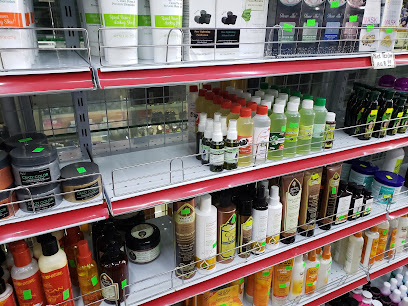
Happy Store
Explore Happy Store in Paramaribo, a vibrant department store offering a diverse array of local and international products for every shopper.
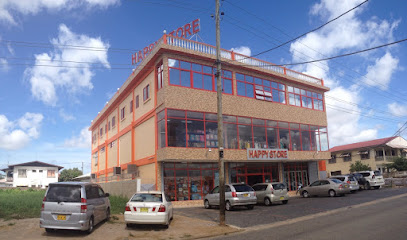
Amazon Fashion
Explore Amazon Fashion in Paramaribo for a unique blend of local and international styles that will elevate your wardrobe.
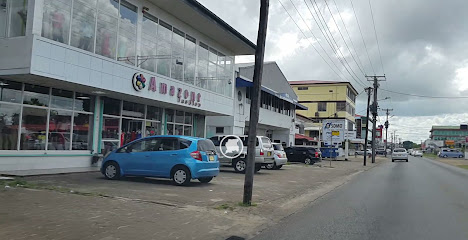
Marowijne Art Park
Experience the vibrant fusion of art and nature at Marowijne Art Park in Moengo, Suriname, where local creativity flourishes amidst stunning landscapes.

Jong Tjien Fa Moengo
Explore the vibrant offerings of Jong Tjien Fa Moengo, a key supermarket in Wonoredjo, where local flavors meet international products.

Winkel Wong A Sang
Explore the vibrant world of local goods at Winkel Wong A Sang, the charming store in Redi Doti, Suriname, perfect for unique souvenirs and cultural experiences.

Nurin's Sweet Bake & More
Explore the delightful world of pastries and traditional sweets at Nurin's Sweet Bake & More in Wonoredjo, Suriname.
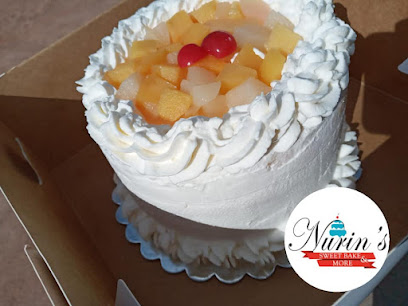
Max-N-Co
Discover fashion at Max-N-Co, a premier clothing store in Paramaribo, offering a unique blend of local craftsmanship and international trends.
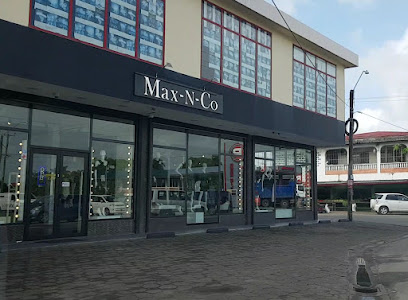
Julie's Giftshop
Explore the vibrant culture of Suriname through unique souvenirs and handmade crafts at Julie's Giftshop in Paramaribo.

Essential bars & hidden hideouts
Bar Zuid
Experience the vibrant nightlife at Bar Zuid in Paramaribo, where local culture meets a lively atmosphere for an unforgettable night out.
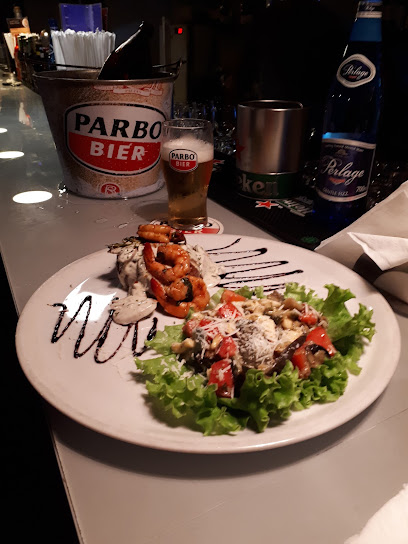
Mingle Paramaribo
Discover the lively ambiance and diverse menu at Mingle Paramaribo, the hotspot for nightlife in Suriname's capital, perfect for socializing and unwinding.
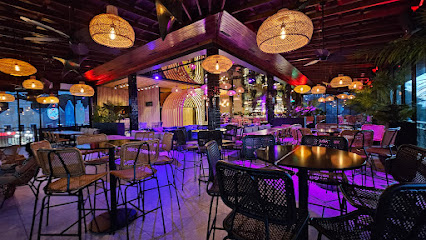
Murphy's Irish Pub
Discover the essence of Ireland at Murphy's Irish Pub, where lively atmosphere and local culture meet in the heart of Paramaribo.
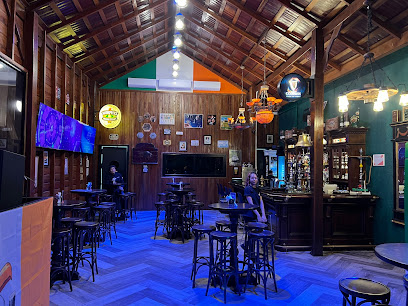
Bar Excellente Suriname
Experience the vibrant nightlife of Paramaribo at Bar Excellente, where refreshing drinks and a lively atmosphere await.

Sportcafe Munder
Discover Sportcafe Munder: A vibrant bar in Paramaribo offering drinks, snacks, and a lively atmosphere for sports enthusiasts and tourists alike.
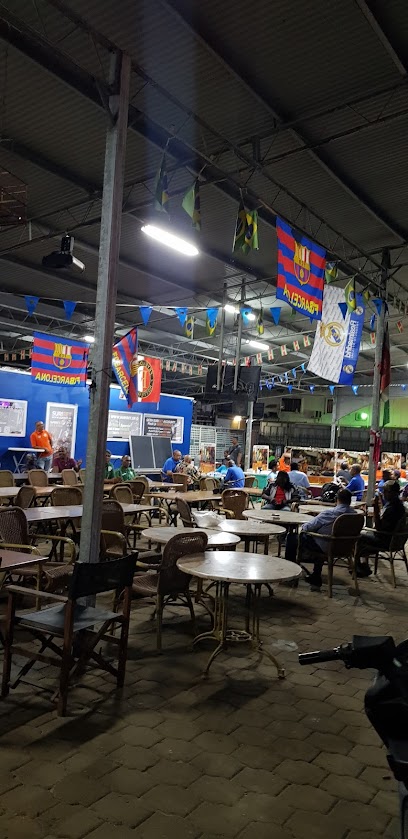
Bar do Bigode
Experience the vibrant nightlife at Bar do Bigode, a top bar in Paramaribo offering local drinks and a lively atmosphere.
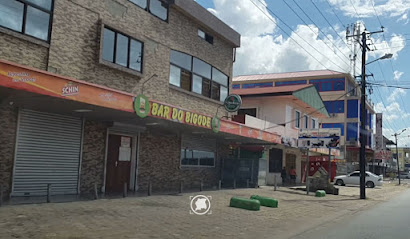
Georgie's Bar & Chill
Discover Georgie's Bar & Chill in Paramaribo: A perfect blend of relaxation and vibrant nightlife awaits you.
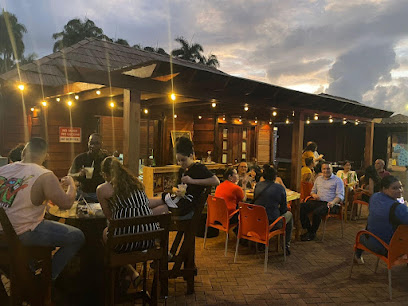
ChillOut Bar
Discover ChillOut Bar in Paramaribo - a tranquil haven for tourists seeking refreshing drinks and a relaxing atmosphere to unwind.
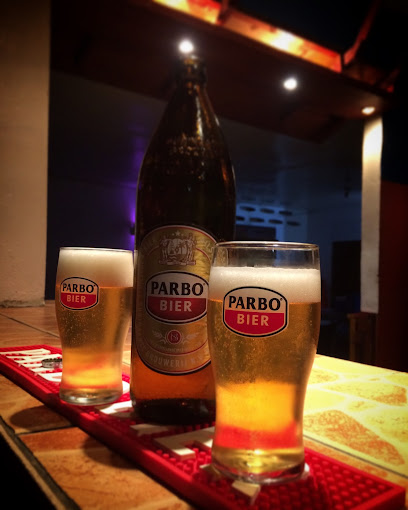
Diego Bar restaurant
Discover the vibrant atmosphere and local charm of Diego Bar, a must-visit destination in Paramaribo for refreshing drinks and cultural experiences.
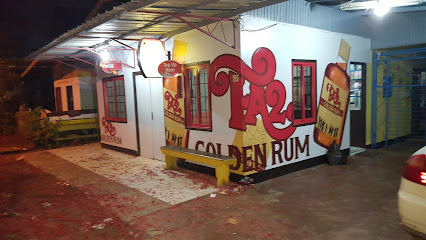
Tipsy Bar & Lounge
Discover the vibrant atmosphere at Tipsy Bar & Lounge, where delicious fast food meets refreshing drinks in the heart of Paramaribo.
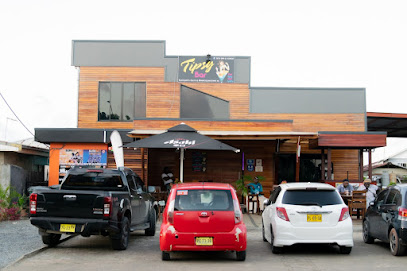
Fes snack & more
Explore the authentic flavors of Suriname at Fes Snack & More, where delicious local snacks meet a warm and inviting atmosphere.

N’Joy Bar & Lounge
Experience the vibrant nightlife at N’Joy Bar & Lounge in Paramaribo, where local culture meets refreshing beverages in a welcoming atmosphere.

Bar das tesudas
Discover local culture and vibrant nightlife at Bar das Tesudas in Albina, Suriname, where refreshing drinks and friendly locals await.

RISING SUN WINE SHOP & COCKTAIL BAR SURINAME
Discover the essence of Suriname at Rising Sun Wine Shop & Cocktail Bar, where fine wines and creative cocktails meet a vibrant atmosphere.

Manbodh Bar
Experience the vibrant nightlife at Manbodh Bar in Paramaribo, where every drink tells a story and every moment is a celebration of Surinamese culture.

Local Phrases
-
- HelloLoekoe
[loo-koo] - GoodbyeAyo
[ah-yoh] - YesYa
[yah] - NoNo
[noh] - Please/You're welcomeMi lobi
[mee low-bee] - Thank youTangitangi
[tahn-gee-tahn-gee] - Excuse me/SorryAfskei mi
[ahf-skay mee] - How are you?Fa waka?
[fah wah-kah] - Fine. And you?Boni. En yu?
[boh-nee. en yoo] - Do you speak English?Yu taki Inglish?
[yoo tah-kee een-gleesh] - I don't understandMi no sabi
[mee noh sah-bee]
- HelloLoekoe
-
- I'd like to see the menu, pleaseMi wani si menu, fu frede
[mee wah-nee see meh-noo, foo fray-deh] - I don't eat meatMi no eetu fesa
[mee noh ee-too fay-sah] - Cheers!Proost!
[prohst] - I would like to pay, pleaseMi wani pai, fu frede
[mee wah-nee pie, foo fray-deh]
- I'd like to see the menu, pleaseMi wani si menu, fu frede
-
- Help!Yere!
[yeh-reh] - Go away!Go na yu fesi!
[goh nah yoo fay-see] - Call the Police!Bel polisi!
[behl poh-lee-see] - Call a doctor!Bel wan doktor!
[behl wahn dohk-tohr] - I'm lostMi de verlore
[mee deh fehr-loh-reh] - I'm illMi de siki
[mee deh see-kee]
- Help!Yere!
-
- I'd like to buy...Mi wani bai...
[mee wah-nee bahy] - I'm just lookingMi de kiki
[mee deh kee-kee] - How much is it?Fa a ko
[fah ah koh] - That's too expensiveDat mofo
[daht moh-foh] - Can you lower the price?Yu kan meki a pris mofo?
[yoo kahn meh-kee ah prees moh-foh]
- I'd like to buy...Mi wani bai...
-
- What time is it?Fa tamara?
[fah tah-mah-rah] - It's one o'clockNa wan kloku
[nah wahn kloh-koo] - Half past (10)Halbi fu tin
[hal-bee foo teehn] - MorningMowning
[mow-ning] - AfternoonMiddagu
[mee-dah-goo] - EveningEfu
[eh-foo] - YesterdayGisteri
[gih-steh-ree] - TodayDey
[dey] - TomorrowMara
[mah-rah] - 1Wan
[wahn] - 2Tu
[too] - 3Dri
[dree] - 4Fofu
[foh-foo] - 5Fifi
[fee-fee] - 6Siksi
[see-kshee] - 7Sebi
[seh-bee] - 8Aiti
[eye-tee] - 9Nain
[nayn] - 10Tin
[teehn]
- What time is it?Fa tamara?
-
- Where's a/the...?Fa a...
[fah ah] - What's the address?Fa a adres?
[fah ah ah-drehs] - Can you show me (on the map)?Yu kan sori mi (opu a mapu)?
[yoo kahn soh-ree mee (oh-poo ah mah-poo)] - When's the next (bus)?Fa ten bosi kba?
[fah tehn boh-see kah-bah] - A ticket (to ....)Wan tiketi (te ...)
[wahn tee-keh-tee (teh)]
- Where's a/the...?Fa a...
History of Moengo
-
Moengo was founded in the early 20th century, primarily as a mining town. The discovery of rich bauxite deposits in the region attracted attention and investment, leading to the establishment of the town in 1916. This marked the beginning of Moengo's transformation from a remote area into a bustling industrial hub.
-
Moengo quickly became one of the main centers for bauxite mining in Suriname. The town's economy heavily relied on the mining and processing of bauxite, which is the primary ore for aluminum. The Suralco company, a subsidiary of Alcoa, played a significant role in the development and operation of the mines. This industry brought significant economic growth and infrastructure development to the area.
-
During World War II, the importance of Moengo's bauxite mines increased dramatically. Bauxite from Moengo was crucial for the Allied war effort as it was used in the production of aircraft. The town saw a surge in activity and production during this time, further cementing its role in the global supply chain.
-
Moengo has evolved into a cultural melting pot due to the diverse workforce that the bauxite industry attracted. People from various ethnic backgrounds, including Maroons, East Indians, Javanese, and Chinese, settled in Moengo. This diversity is reflected in the town's cultural practices, festivals, and cuisine, creating a unique cultural tapestry.
-
Following Suriname's independence from the Netherlands in 1975, Moengo experienced significant changes. The town continued to be a vital part of the country's economy, but also faced challenges such as political instability and economic fluctuations. Despite these issues, Moengo managed to maintain its industrial and cultural significance.
-
In recent years, Moengo has undergone a transformation. While the bauxite industry has declined, the town has reinvented itself as a cultural and artistic center. Initiatives like the Moengo Festival of Visual Arts have put the town on the map as a destination for art and culture. The festival attracts artists and visitors from around the world, showcasing Moengo's vibrant cultural scene.
Moengo Essentials
-
Moengo is located in the Marowijne District of Suriname. To get there, you can fly into Johan Adolf Pengel International Airport in Paramaribo, the capital city. From Paramaribo, you can take a bus or hire a taxi to Moengo. The journey by road typically takes around 3 to 4 hours. There are also organized tours that include transportation to Moengo.
-
Moengo is a relatively small town, and many of its attractions are easily accessible on foot. For longer distances, local taxis are available and reasonably priced. There are also minibuses that operate within the town and connect to nearby areas. Renting a car can offer more flexibility if you plan to explore the surrounding regions.
-
The official currency in Suriname is the Surinamese Dollar (SRD). Credit cards are accepted in some hotels, restaurants, and shops, but it is advisable to carry cash, especially in smaller establishments and rural areas like Moengo. ATMs are available but may not be as frequent as in larger cities, so ensure you have sufficient cash before your trip.
-
Moengo is generally safe for tourists, but it is always wise to take standard precautions. Avoid walking alone at night in unfamiliar areas and keep an eye on your belongings in crowded places. There are no specific high-crime areas targeting tourists, but it is best to remain vigilant and aware of your surroundings.
-
In case of emergency, dial 115 for police or 113 for medical emergencies. There are local medical facilities in Moengo, but for serious medical issues, you may need to be transferred to a hospital in Paramaribo. It is recommended to have travel insurance that covers medical emergencies. Pharmacies are available in the town for minor health issues and over-the-counter medications.
-
Fashion: Do dress modestly, especially when visiting cultural or religious sites. Avoid wearing revealing clothing. Religion: Do respect local customs and traditions. Public Transport: Do be respectful and give up your seat to elderly passengers. Don’t eat or drink on public transport. Greetings: Do greet people with a friendly handshake. A smile and nod are also appreciated. Eating & Drinking: Do try local dishes and accept food offerings graciously. Don’t refuse hospitality, as it is considered impolite.
-
To experience Moengo like a local, visit the local markets where you can buy fresh produce and traditional Surinamese goods. Engage with locals, as they are often friendly and willing to share stories about the town’s history and culture. Don’t miss visiting the Museum Moengo, which showcases contemporary art and the rich cultural heritage of the area. For a unique experience, take a walk through the surrounding nature trails to appreciate the lush landscapes and local wildlife.
Trending Landmark in Moengo
-
Palmtree Garden
-
Fort Zeelandia
-
Saint-Peter-and-Paul Basilica of Paramaribo
-
Brownsberg
-
Peperpot Nature Park
-
Jules Wijdenbosch Bridge
-
Presidential Palace
-
Neveh Shalom Synagogue
-
Arya Dewaker Mandir
-
Neotropical Butterfly Park
-
Plantage Bakkie
-
Braamspunt
-
Surinaams Museum
-
Fort Nieuw Amsterdam
-
Historic Innercity of Paramaribo
Nearby Cities to Moengo
-
Things To Do in Albina
-
Things To Do in Mariënburg
-
Things To Do in Lelydorp
-
Things To Do in Brokopondo
-
Things To Do in Paramaribo
-
Things To Do in Skeldon
-
Things To Do in New Amsterdam
-
Things To Do in Kwakwani
-
Things To Do in Ituni
-
Things To Do in Linden
-
Things To Do in Bartica
-
Things To Do in Anna Regina
-
Things To Do in Lethem
-
Things To Do in Kamarang
-
Things To Do in Sangre Grande




